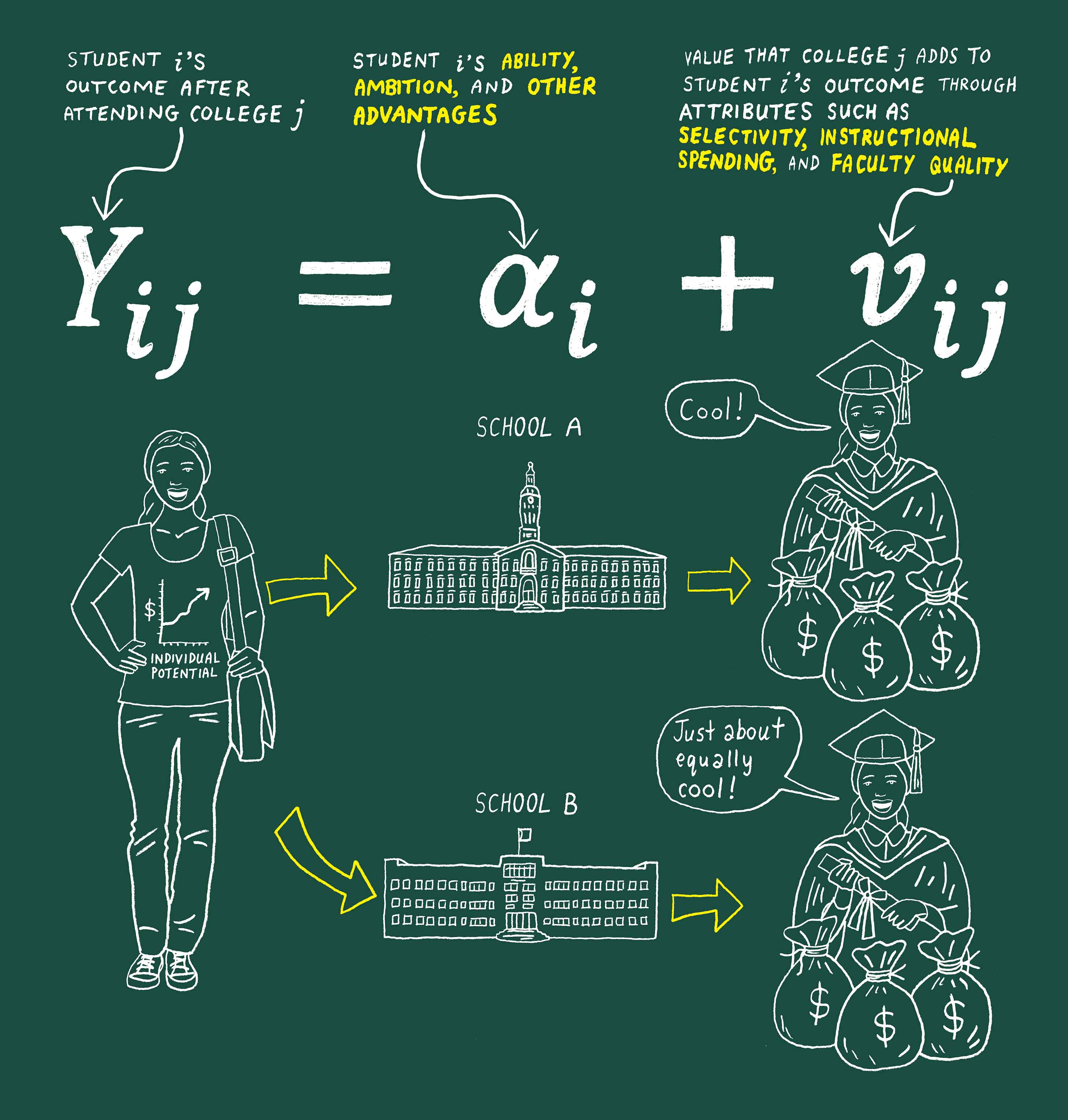
Giving Students a Choice Can Make Schools Better
An analysis of school choice in Los Angeles examines its impact on educational inequality.
Giving Students a Choice Can Make Schools Better
Every year, many students compete to gain admission to a relatively small group of selective colleges. Going to one of these top-tier colleges may carry with it the promise of good prospects after graduation, but when Chicago Booth’s Jack Mountjoy and Washington University in St. Louis’s Brent Hickman analyzed the value in attending one college in Texas over another, they find that going to a more selective school provided only a small, temporary earnings premium. What seemed to matter more was a student’s preexisting individual potential. Among high schoolers who applied to and were accepted by the same set of colleges—a useful signal of ability, ambition, and other unobserved advantages—earnings were fairly similar regardless of where they ended up enrolling, the researchers find. Even so, some colleges do add more value than others. While a school’s selectivity may not significantly affect how much its graduates make, other factors such as instructional spending and faculty characteristics tend to. See our article “Is That College Worth the Price Tag?” to learn more.

Illustration by Peter Arkle

An analysis of school choice in Los Angeles examines its impact on educational inequality.
Giving Students a Choice Can Make Schools Better
The standard measure of the CPI doesn’t recognize important aspects of how people experience the economy.
Why Inflation Still Looms Large for US Voters
The former governor of the Reserve Bank of India discusses the Fed’s role in the US economy and analyzes its response to the pandemic.
Who Does Raghuram Rajan Blame for Inflation?Your Privacy
We want to demonstrate our commitment to your privacy. Please review Chicago Booth's privacy notice, which provides information explaining how and why we collect particular information when you visit our website.